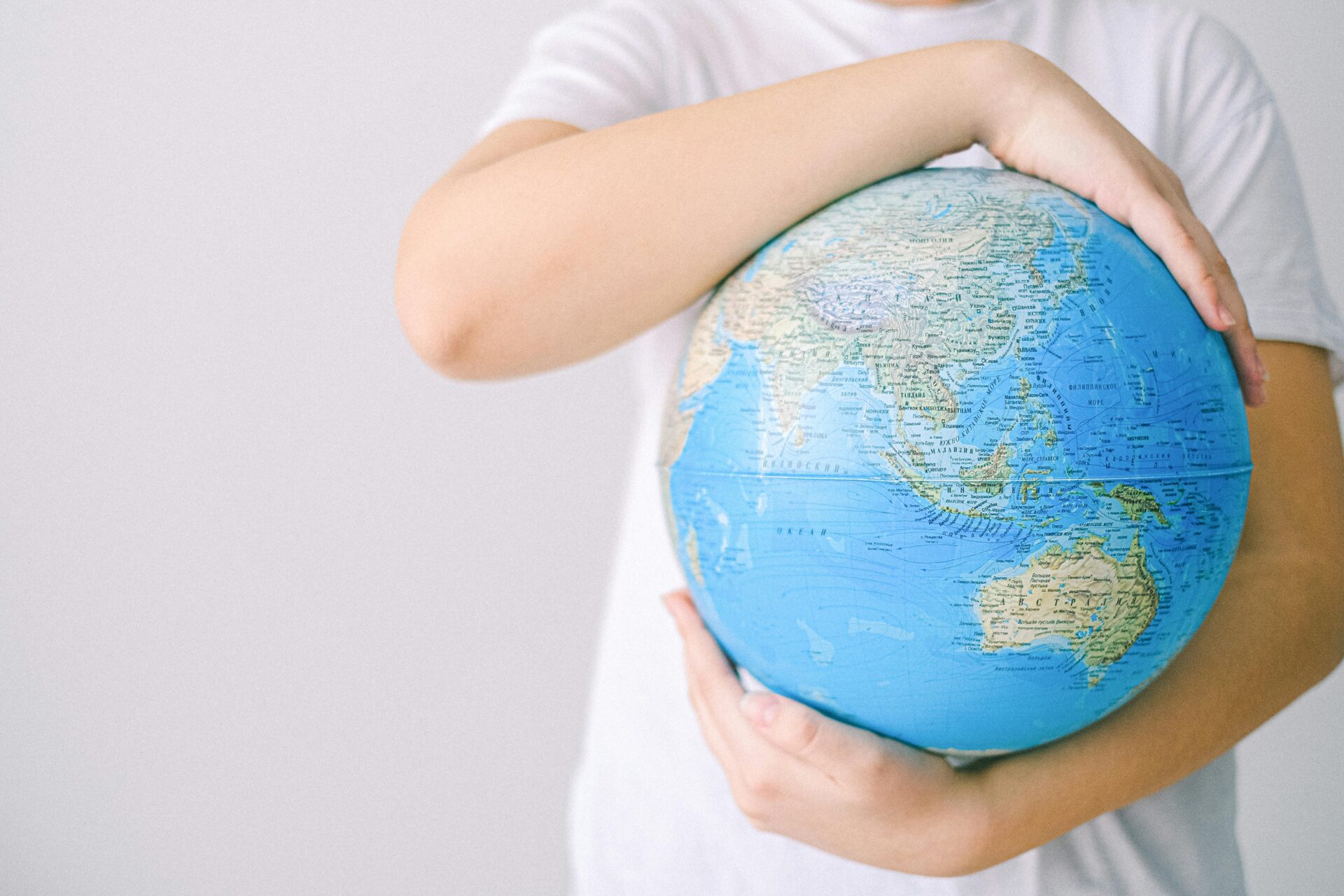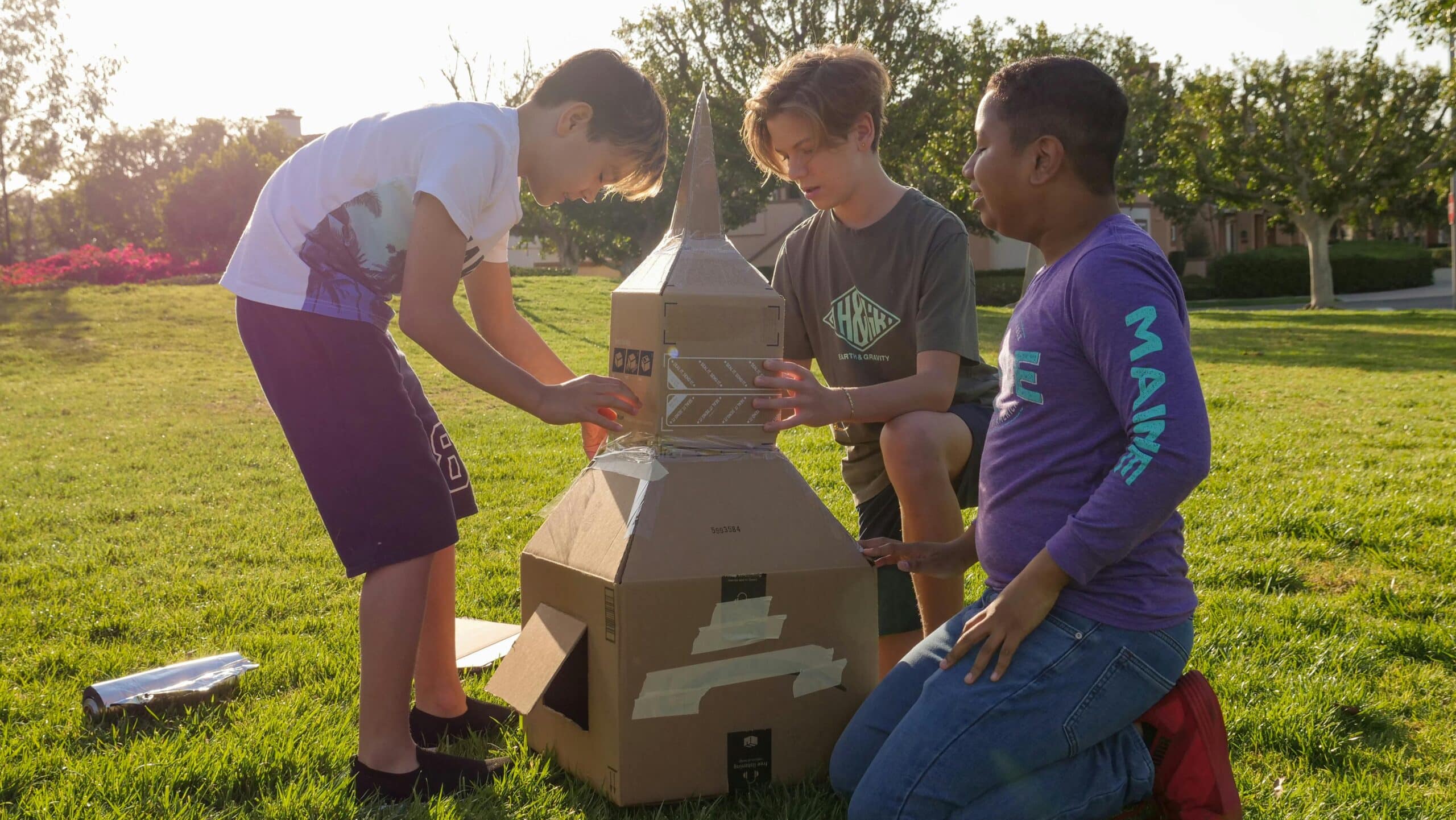In a world that’s beautifully diverse and becoming increasingly more connected, helping our kids understand and appreciate different cultures isn’t just a nice addition to homeschooling – it’s essential for their futures and to help grow their sense of place in the world – as well as compassion.

Embracing cultural learning isn’t about being “woke”, or ticking off a list of world holidays. You don’t need to lots of money to travel the world, you need an open mind, the willingness to learn, curiosity and an open heart. Parent – don’t worry if you’re new at it, too! This is a good thing, there’s a whole world of amazingly rich cultures waiting to be explored by you and your kids.
This approach to learning is about raising humans who are kind, curious, and grounded. Humans who can listen, celebrate difference, and find common ground. And as homeschooling parents, we’re in a unique position to make this kind of learning a natural and powerful part of daily life. We can teach children about diversity in it’s many forms, what a gift to give them!
As homeschoolers, we get to slow down, ask big questions, and follow our children’s sense of wonder. We get to explore traditions, languages, stories, and perspectives in a way that feels real and right for our family – not rushed or prescribed.
And the best part? You get to learn amazing things too!
Think cooking Argentinian empanadas, learning traditional African folk dances alongside your kids, saying hello in new languages, or learning about and hosting a Chinese Lantern Festival in your own backyard. The fun is endless – and the learning, so rich.
Whether you’re just starting out or already weaving cultural threads into your days, here are 10 simple and meaningful ways to bring the beauty of cultural learning into your homeschooling journey:
1. Build a Global Bookshelf
That humble little bookshelf in your living room can become a window to the world. One where your children grow up seeing not just themselves reflected in stories, but also learning to deeply value the lives, dreams, and voices of others.
Books are one of the most powerful and accessible tools we have for cultural learning – and the beauty is, they meet you wherever you are. Whether you’re curled up on the couch with your little ones or gathered around a kitchen table with older kids, stories have the power to transport you across oceans, time periods, and ways of life.
Fill your homeschool shelves with stories written by authors from all over the world. Seek out picture books filled with cultural traditions, folktales passed down through generations, vibrant poetry, honest memoirs, and chapter books that reflect voices your children may not otherwise hear. Prioritise books written by people from within those cultures (not just from cultures from or closely related to your own) – this makes a big difference. Authentic voices offer nuance, truth, lived experience and emotion that can’t be replicated.
When children hear stories from different parts of the world, they begin to see beyond their own experiences. They realise that there isn’t just one way to live, love, learn, or celebrate. This kind of exposure gently builds empathy and stretches their thinking, helping them step into someone else’s shoes – even just for a few pages.
Organisations like We Need Diverse Books are doing incredible work to make sure these stories are reaching families everywhere. Your local librarian is also a gem – ask them to help you find books from different cultures, especially ones that match your child’s age and interests.
2. Explore Culture Through Cooking
Food is one of the most powerful ways to connect with a culture – and it’s something the whole family can enjoy, hands-on. It’s not just about what’s on the plate – it’s about the story behind it. Each dish has its own journey: where it comes from, who makes it, how it’s shared, and why it matters to those people.
Choose a country or culture, find a traditional recipe, and bring it to life in your kitchen. You might be folding delicate dumplings, stirring a bubbling pot of spicy curry, rolling soft tortillas by hand, or shaping sweet sesame balls. While your hands are busy, let your conversations travel – talk with your kids about where the dish comes from, what the local landscape is like, what ingredients grow there, and the celebrations or customs the food is part of. If you don’t know, you can find out together! What a cool research project…
Cooking becomes a delicious way to explore geography – why is rice so central in some parts of the world? Why is flatbread a staple in so many cultures? It also opens the door to history – how did spices travel along trade routes? How did colonisation change food traditions? You can even introduce language by learning the names of ingredients or dishes in their original languages.
The sights, smells, textures, and tastes create a tangible experience your kids will remember. There’s something magical about the scent of freshly toasted spices or hearing the sizzle of oil in a pan – suddenly, your home becomes a little portal to another part of the world.
A wonderful resource to check out is the Kids Food Atlas, which is packed with engaging, culturally rich food adventures for children.
Cooking connects hearts, minds, and hands. And best of all – it ends with something you can eat together, which might just become a new family favourite.
3. Celebrate Cultural Festivals
If your family holds personal beliefs that prevent you from participating in certain celebrations, that’s completely okay. You can still weave the benefits of learning about these cultural moments through stories, music, food, and craft, without taking part in religious rituals.
For example, you might choose to explore the history of Diwali without lighting lamps, or learn about Eid by preparing a traditional dish rather than observing the fast. These small acts of learning still build understanding, curiosity, and connection.
From Matariki to Diwali, Passover to Holi, Lunar New Year to Eid – there are incredible festivals celebrated across the world. You don’t need to celebrate them all (or any of them) in a religious sense. But learning about their history, symbols, foods, and meaning is a rich and respectful way to explore culture with your children.
You could try creating colourful rangoli patterns for Diwali using chalk, making paper lanterns to celebrate the Mid-Autumn Festival, decorating a haft-seen table for Nowruz, or baking honey-dipped treats for Rosh Hashanah. These festivals often have symbols and seasonal links that tie into nature, the stars, the moon, harvests, or migration – all of which are rich entry points for deeper exploration.
Even simply reading a picture book about how children in another country celebrate can open a child’s eyes to the beauty of difference.
4. Create a “Global Learning Month”
Dedicating a few weeks to exploring a specific country or culture can be one of the most meaningful ways to connect your homeschooling to the wider world!
Let your child choose a place that interests them – maybe it’s Japan, Morocco, Ireland, or the Pacific Islands – and build a mini unit around it using books, art, cooking, stories, and music.
If your child picks Japan, for instance, you might learn to fold origami cranes, learn about the art of sushi making and fermented foods, try making miso soup, watch a Studio Ghibli film like My Neighbour Totoro, and read a folktale like Momotaro the Peach Boy. You could explore Japan’s geography, label maps together, listen to traditional taiko drums, and write a make-believe postcard from your “travels” in Japan.
These sorts of activities when sewn together can become really rich, layered projects, where learning crosses into art, history, storytelling, and science in the most natural, joyful ways. THIS is meaningful learning, THIS is what creates a lifelong love of learning. THIS is the sort of hands-on, diverse learning that kids will be likely to remember.
5. Explore World Music and Dance
Music is one of the most joyful ways to experience culture – it’s something you can feel in your whole body and carry in your heart. Check out this amazing musical resource by “Smithsonian Folkway Recordings“.
Whether you’re clapping to the rhythm of flamenco, humming along to Polynesian chants, or crafting your own rainforest rainstick, world music is such a beautiful celebration of movement, collective memory, and cultural stories – and it’s super fun!
During a day homeschooling, why not fill your home with sounds from around the world: the deep, earthy rhythm of an African djembe, the wavy notes of a Chinese erhu, the playful strings of a Celtic fiddle, or the pulsing beat of Brazilian samba drums. As a learning project, you could map out different types of music on a world globe/map and put together a playlist that travels from continent to continent. Let your kids explore the sounds of each culture, let your lounge become a global dance floor.
Get creative by making your own instruments or finding people from the community who can help you learn how to – rice in jars for shakers, stretched rubber bands over boxes for homemade string instruments, or even a water xylophone made from glasses. You could also explore Taonga Pūoro, traditional Māori instruments, like the kōauau (short flute), porotiti (spinning disc), or pūtōrino – instruments that were once used to do things mimic bird calls, or carry messages across distance.
6. Learn Phrases in a New Language
When a child (and adult) learns a word in another language, it can feel like unlocking a little piece of the world you didn’t have access to prior. Language learning absolutely doesn’t need to be formal or structured – playful, curious, and woven into everyday life is best.
Label everyday items around your house with sticky notes and suddenly your home becomes a living language map. Count together in Spanish while building towers, or learn the colours in Mandarin as you sort socks from the washing pile. Incorporate greetings and simple phrases into daily life: you could say kia ora as you begin your morning, talofa before lunch, salām at bedtime, or bonjour when you open the front door.
Sing a favourite nursery rhyme in another language (you’d be surprised how many nursery rhymes or kids songs you know exist in other languages), or learn a lullaby from another part of the world. When cooking a meal inspired by the language you’re exploring and learn the names of the ingredients as you go – like pan, queso, arroz, tomate. These little sparks of language plant seeds of confidence and empathy, helping kids realise that communication comes in so many beautiful forms.
Some words don’t have a direct English translation, and that’s where the magic begins. They reveal how different cultures describe feelings, relationships, nature, and time. Exploring language is also exploring perspective.
7. Watch Films and Documentaries From Other Cultures
Films are another powerful way to introduce children to the everyday lives, values, and perspectives of people around the world.
Choose movies and documentaries that are made in or inspired by different cultures, watch them with your kids and then open the door to rich discussions. Younger children might love My Neighbour Totoro for a gentle taste of Japanese storytelling or Pachamama for a colourful adventure set in the Andes. Song of the Sea is a magical and emotional film that introduces Irish folklore through the story of selkies and the sea. For older kids, Whale Rider offers a moving portrayal of Māori culture and leadership, while The Boy Who Harnessed the Wind tells a real-life story of resilience and innovation in Malawi.
You can pair films with simple follow-up questions: What stood out to you? What did you notice about how people live, dress, or speak? What values could you see that the characters hold?
Short videos from National Geographic Kids and BBC Bitesize are excellent resources, offering engaging, bite-sized insights into global traditions, geography, and ways of life.
8. Grow Plants With Cultural Significance
A garden isn’t just about growing food. It’s about growing understanding.
Gardening can be a magical way to explore the world without ever leaving your backyard. Every seed carries a story, and when we plant with intention, our gardens become living maps of culture, memory, and tradition.
You might grow taro, linking hands with Pacific Island communities who have tended its roots for generations, or plant tall stalks of maize, honouring its sacred place in Native American histories. A little pot of coriander might spark conversations about how it’s used to flavour everything from Indian curries to Mexican salsas and Middle Eastern flatbreads.
As your garden grows, so does your connection to the world. Talk with your children about where these plants come from, what climates they love, and how they’ve travelled across oceans and continents – carried in pockets, traded across borders, and passed down from grandmother to child. You might be surprised to learn how chilies made their way into so many cuisines, or how sweet potatoes link kitchens from Peru to Polynesia.
Even if you only have a sunny windowsill or a few pots by the door, you can still create a garden that fosters curiosity. Watch their hands dig, sprinkle, water, and their eyes fill with wonder. Then, when your plants are ready, cook together – taste something new, smell the spices, and talk about the people who’ve grown, shared, and loved these plants long before they reached your plate.
9. Explore Local Cultural Connections
You don’t need a passport or lots of money to go exploring – cultural discovery can begin right outside your front door, in your very own community! Hunt for place names in te reo Māori and uncover the stories woven into your local hills, rivers, and towns. In Aotearoa New Zealand, every name is rich with meaning – like little poems tied to the land by people long ago. If you’re not sure where to start, check out our Aotearoa Map and Discovery Unit Study for inspiration.
Take the time to learn about cultural groups in your local community. Visit a local museum like you’re on a treasure hunt for old legends, or strike up a conversation with an elderly person about the foods, festivals, and traditions they remember from their childhood. Smell the spices wafting from nearby kitchens, listen for the music playing in local shops, and notice the languages spoken all around you. Even the signs in your neighbourhood – street names, shop fronts, community murals—can hold bursts of culture just waiting to be uncovered.
Ask big, curious questions: Who lived here before us? What stories does this land remember? What languages once echoed in the wind? With just a little wonder, the everyday becomes magical—and your world grows wider with every step.
10. Host a Cultural Experience Day
Celebrate your cultural learning with a Cultural Experience Day – a fun, meaningful way to bring everything you’ve explored to life. You can keep it simple and enjoy it at home with your family, or plan something a little bigger with your homeschool group or a few friends.
Each child might choose a culture they’ve been learning about and share something they enjoyed – like making a traditional dish, playing music, showing a piece of art, or telling a story or legend. You could hang paper lanterns, paint colourful folk patterns, or play rhythms on handmade drums. Maybe someone wants to try teaching a dance, or bring in a family recipe to cook together. There are no rules – just lots of ways to have fun and connect.
If you’re celebrating with others, each family could represent a different culture and create a little table or “stall” to visit. Children might dress in colours from that region, bring along a craft to share, or offer a snack inspired by their learning. You can even make simple passports to stamp as you go!
It doesn’t need to be perfect or Pinterest-worthy – just heartfelt. These hands-on, playful moments help children build a real connection to the people, places, and traditions they’ve explored.
And the best part? Cultural learning doesn’t have to end here. It can be something you return to again and again, gently woven into your everyday through food, music, stories, and curiosity about the world around you.
Final Thoughts
Cultural learning isn’t something you have to “add in” to an already full homeschool plan, or something that has to be for set period of thing, then wrapped up. It can be part of every day life. The way you read, cook, talk, and explore the world together. There are so many ways that cultural learning hugely benefits kids.
The more children learn to appreciate and respect difference, the more they’ll be able to navigate the world with kindness, curiosity, and confidence.
And remember—you don’t need to be an expert to guide your children in this. You just need to be willing to wonder alongside them.
So whether it starts with a new book, a festival craft, or learning how to say “hello” in another language—take that first step. It doesn’t have to be perfect. It just has to begin.
We’d love to hear from you – what’s one cultural story, tradition, or experience that’s sparked curiosity in your homeschooling? What does cultural learning mean to your whānau? Do you have any inspiring ideas to add to our suggestions?
Share your thoughts in the comments below – after all, we’re learning together 💛






